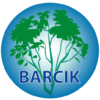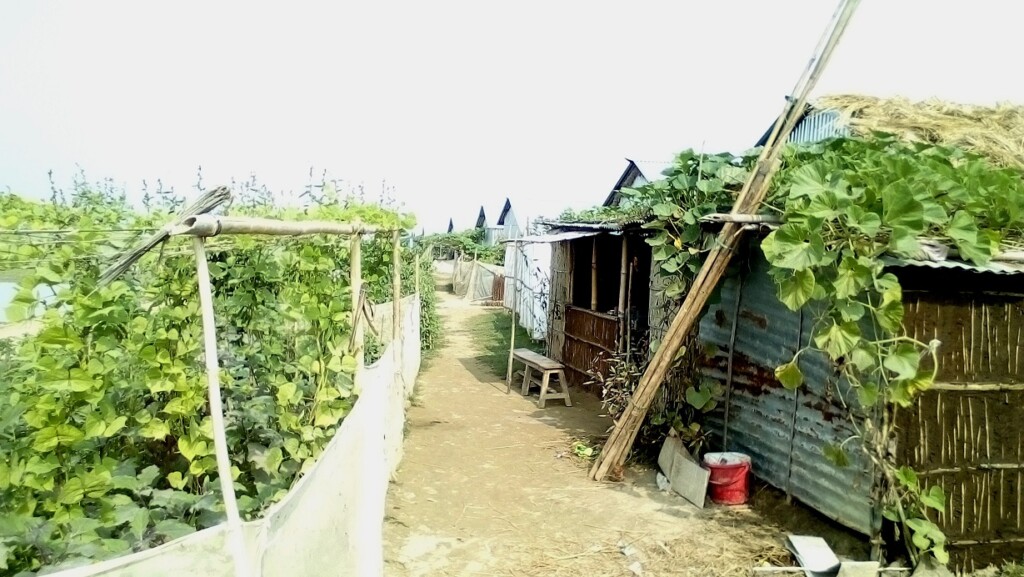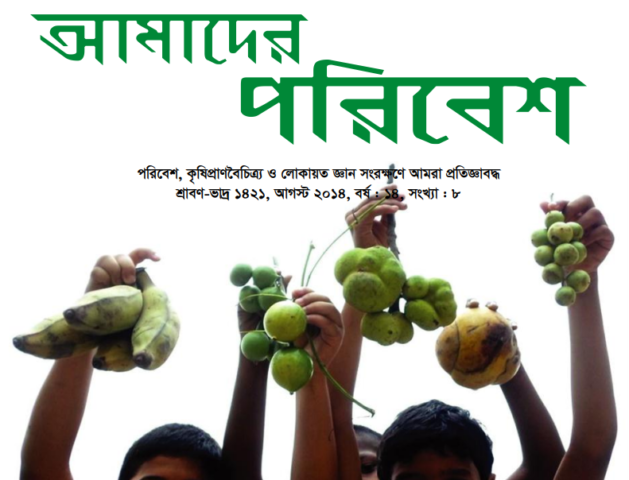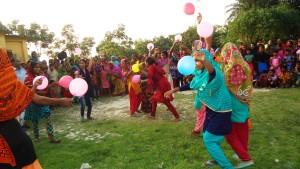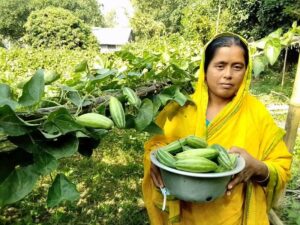By Md. Ohidur Rahman, from Netrakona
About 50 families comprise 235 people live in the midst of Gonesh, Dingapota and Dugnoi haors (Hoar is like an islands being surrounded by water in all its sides and the water lasts for six months of a year) under Govindasree union of Madan sub-district of Netrakona district.. These people experience disaster frequently in their day to day life. The disaster stagnant their progress leaving them in the edge of poverty and hardship.
In order to ease the life and livelihood problems of those people living in the aforementioned haors of Gavindashree union the Madan Upazila administration built houses for poor and landless people in 2019 which is now known as ‘cluster village’. However, after those houses have been handed over to the poor and landless people BARCIK, with advice and suggestions from the administration, encouraged and facilitated the people to farm diverse crops and plant water tolerant trees around the cluster village to protect themselves from disasters as well as the environment.
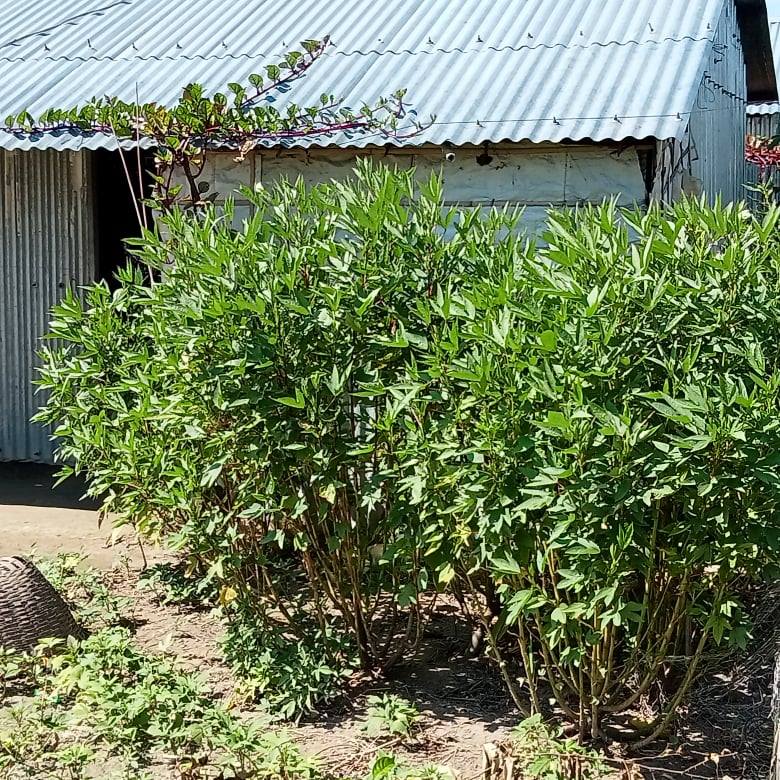
Thus, with the facilitation from BARCIK the community in the cluster village planted 500 Hijol & Koroch and 3000 idols of cane saplings, binnachuba and dhulkalami to strengthen the base of their residence. Besides, the organization cooperated and encouraged the people to rear livestock and poultry. In order to meet the nutritional needs of the family members and adapt to climate change, BARCIK also encouraged the villagers to cultivate vegetables on their homestead and fallow lands and BARCIK distributed 18 varieties of vegetables seeds among the 50 families. After getting seeds, the residents of cluster village cultivated a variety of vegetables on a small plot of their homestead land (1.5 decimal).
However, visiting the cluster village recently it has been seen that all homestead lands, house roofs and fallow lands of the cluster village have been covered by diverse vegetable. The vegetable that they farmed include: gourd, radish, bean, date, red spinach, sweet pumpkin, spinach, chukai, onion, garlic, chilli, eggplant, papaya, sugarcane etc. The villagers said that they are eating their own vegetables, they do not have to buy any vegetables from the market, but are selling some vegetables in the market which ensures additional cash for them.
Residents of cluster village are collecting and conserving seeds of each vegetable they farmed in their respective houses. The women of Guchhgram have created a green village by cultivating vegetables and fruit trees in every inch of their lands. The villagers are now cultivating mango, blackberry, jackfruit, litchi, coconut, lemon, mango, guava, papaya, pomegranate, banana, betel nut etc. According to their statement, they have provided seeds to 57 women of the neighboring villages so that they could meet their needs. Govindashree ‘seedbank’ has provided about 3 kg of bean, data, gourd and sweet gourd’s seeds to the neighbors.
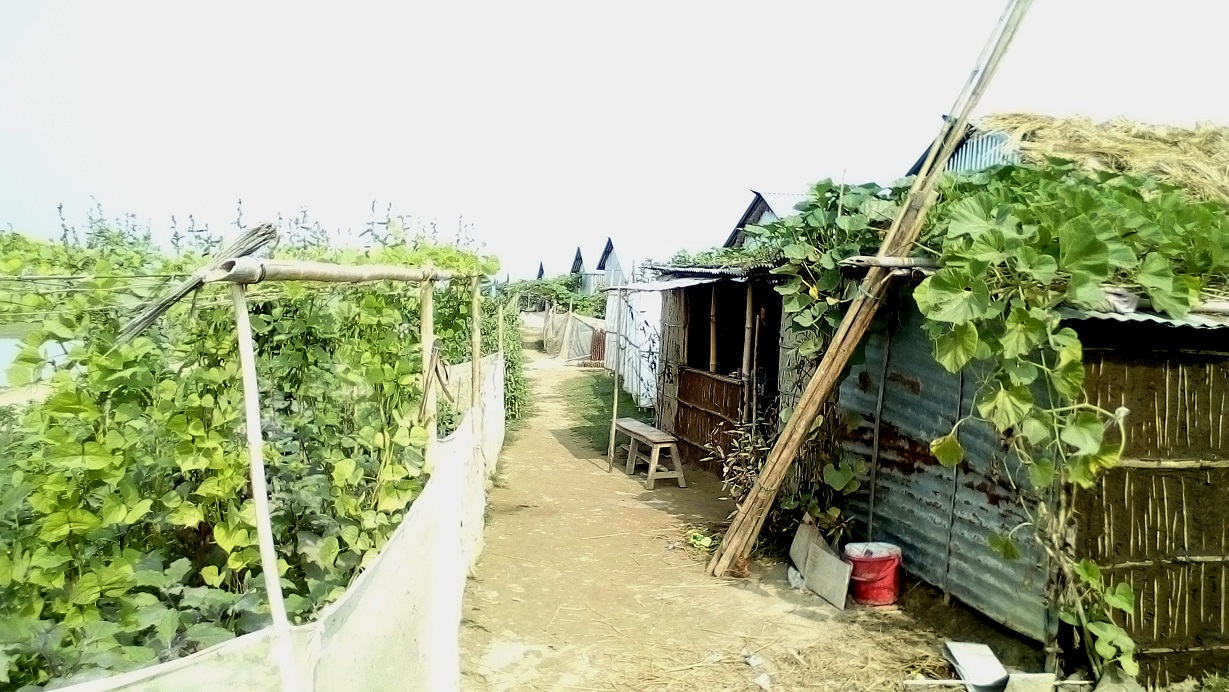
Fazlul Haque, a resident of cluster village, has cultivated eggplant of whole year round, gourd, gourd, chilli, puishak, chukai (Spinaches), data, sweet gourd, squash, sweet potato, gourd, squid, chichinga etc. in his small land. He said, ‘After getting seeds from BARCIK, I have cultivated 13 varieties of vegetables on my 1.5 decimal of homestead land. We are consuming these vegetables. I hope I can earn some cash by selling in the surplus vegetable in the market even after meeting my needs. I will conserve the vegetable seeds myself and give the seeds to the families at cluster village who do not have these seeds.’
A disaster tolerant enclosure has been constructed around the cluster village with Hijal, Karach, Murta (cane), Dhulkalami Binnachubar. The villagers are very happy to get electricity in the village. They are rearing ducks, roosters, pigeons, cows, goats for improving their livelihood. The children are studying. 50 families of the village have formed an organization. They wish to do their own development by themselves.
Translated by Silvanus Lamin
